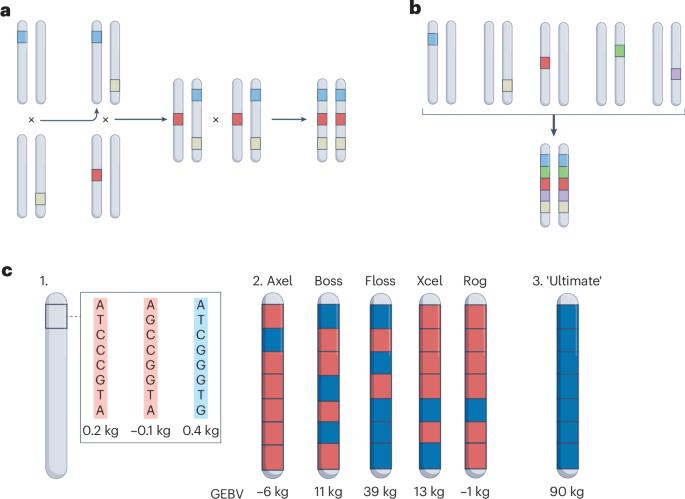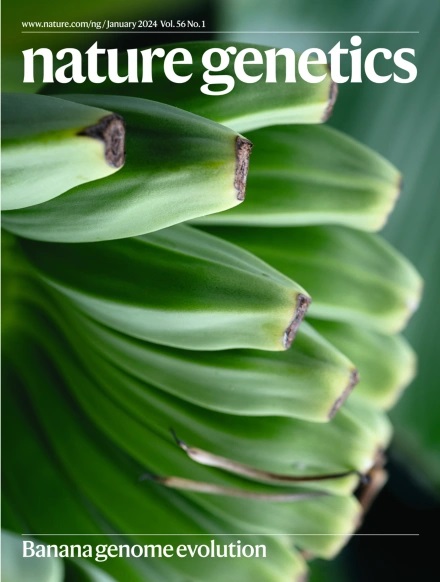创造作物和牲畜终极基因型的潜在方法
IF 31.7
1区 生物学
Q1 GENETICS & HEREDITY
引用次数: 0
摘要
为了进行基因组选育,已经对主要农作物和牲畜物种的成千上万个个体进行了基因分型和表型分析,在某些情况下甚至达到了数百万个个体。终极基因型 "是指在群体中对目标性状具有最有利影响的标记等位基因单倍型,可以从这些数据集中构建出来。终极基因型的表现可达目前种群中最佳个体的六倍,奶牛的净利润(包括一系列经济性状)、小麦的产量和鹰嘴豆的百粒重都证明了这一点。然而,目前的育种策略旨在通过常规杂交培育终极基因型,这需要很多代人的努力。作为一个假设性的想法,我们在此设想了未来快速实现终极基因型的三种途径:基因编辑加速重组、直接编辑全基因组单倍型序列和合成生物学。本文章由计算机程序翻译,如有差异,请以英文原文为准。


Potential approaches to create ultimate genotypes in crops and livestock
Many thousands and, in some cases, millions of individuals from the major crop and livestock species have been genotyped and phenotyped for the purpose of genomic selection. ‘Ultimate genotypes’, in which the marker allele haplotypes with the most favorable effects on a target trait or traits in the population are combined together in silico, can be constructed from these datasets. Ultimate genotypes display up to six times the performance of the current best individuals in the population, as demonstrated for net profit in dairy cattle (incorporating a range of economic traits), yield in wheat and 100-seed weight in chickpea. However, current breeding strategies that aim to assemble ultimate genotypes through conventional crossing take many generations. As a hypothetical thought piece, here, we contemplate three future pathways for rapidly achieving ultimate genotypes: accelerated recombination with gene editing, direct editing of whole-genome haplotype sequences and synthetic biology. This Perspective discusses approaches to generate ultimate genotypes, combining the best chromosome segments in livestock and crop populations, to increase key production, sustainability and welfare traits, compared with the current best individuals.
求助全文
通过发布文献求助,成功后即可免费获取论文全文。
去求助
来源期刊

Nature genetics
生物-遗传学
CiteScore
43.00
自引率
2.60%
发文量
241
审稿时长
3 months
期刊介绍:
Nature Genetics publishes the very highest quality research in genetics. It encompasses genetic and functional genomic studies on human and plant traits and on other model organisms. Current emphasis is on the genetic basis for common and complex diseases and on the functional mechanism, architecture and evolution of gene networks, studied by experimental perturbation.
Integrative genetic topics comprise, but are not limited to:
-Genes in the pathology of human disease
-Molecular analysis of simple and complex genetic traits
-Cancer genetics
-Agricultural genomics
-Developmental genetics
-Regulatory variation in gene expression
-Strategies and technologies for extracting function from genomic data
-Pharmacological genomics
-Genome evolution
 求助内容:
求助内容: 应助结果提醒方式:
应助结果提醒方式:


